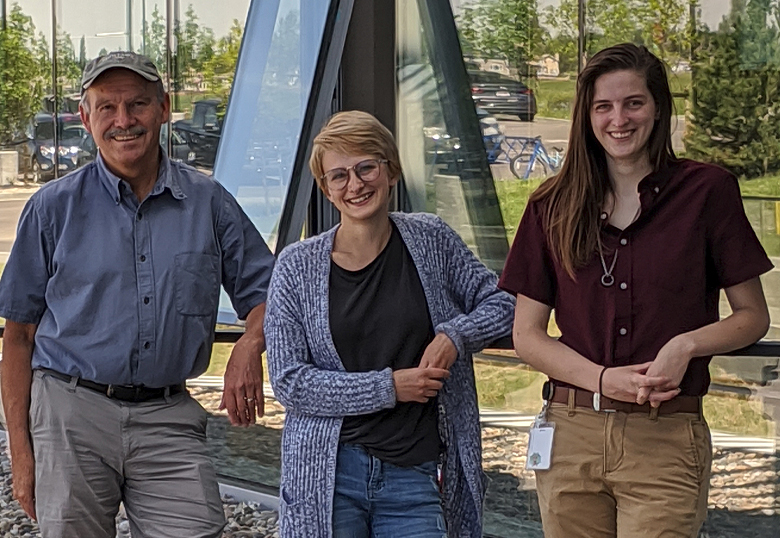Two University of Lethbridge students can add publications to their resumés after they took advantage of getting involved in research early in their university education. Not only have they published papers in major journals, they’ve also collaborated with other departments within the U of L and internationally.

Marielle Stoutjesdyk, an undergraduate student in the Department of Physics, and Amy Henrickson (BSc ’17), a master’s student in the Department of Chemistry & Biochemistry, work in Dr. Borries Demeler’s lab. Demeler is a Canada 150 Research Chair for Biophysics and director of the Canadian Center for Hydrodynamics, which uses analytical ultracentrifugation to analyze molecules in solution.
Stoutjesdyk has been the first author on two scientific papers published in an international journal, all while working on her undergraduate degree. Her first project involved testing out a new, highly technical analytical ultracentrifuge, specifically measuring how much its titanium rotor stretched when spinning at 60,000 revolutions per minute.
“Imagine being on a merry-go-round and spinning so fast you feel gravity pushing you 300,000 times stronger than usual,” says Stoutjesdyk. “The 12-pound titanium rotor in the ultracentrifuge experiences these forces and, as a result, it begins to stretch out. This causes errors in the analytical software that’s collecting data on the molecules being spun. My job was to correct this error so I designed a novel centerpiece that measures the stretching of the rotor and errors from the optical systems.”
Her paper was published in the European Biophysics Journal and earned her first place in a poster presentation in the 2019 Chinook Symposium for Chemistry and Biochemistry. She also presented her research at national conferences in Toronto and Montreal.
“I went on to study the compression capabilities of the ultracentrifuge,” she says. “We found liquids would experience some compression when we spun them as fast as we could. This demanded further inspection as the compressibility of liquids is an important parameter when investigating molecules in a solution.”
The paper that resulted from this work was recently published, also in the European Biophysics Journal, with Henrickson and colleagues from the University of Montana as co-authors.
Henrickson has been involved in multi-wavelength analytical centrifugation, a new technique that provides improved resolution and is only available at the U of L. It’s used for studying solution interactions where the interacting molecules contain different spectral properties. Through a collaboration with Dr. Renwick Dobson at New Zealand’s University of Canterbury, three graduate students came to the U of L to learn how to design, run and analyze data using analytical ultracentrifugation. Henrickson helped teach the students about multi-wavelength techniques.
“From these collaborations, we have had the opportunity to publish a paper in the European Biophysics Journal and we are in the process of undergoing reviews of a second paper,” says Henrickson. “Collaborations within science are of significant importance as they allow research groups to gain experience and expertise in fields they normally wouldn’t have access to.”
The accomplishments of these students demonstrate the opportunities for research that U of L students can access early on in their university careers.
“Marielle and Amy have already built impressive resumés as students and that will help them in their careers,” says Demeler. “Their achievements as students demonstrate their strengths as scientists and open up many opportunities for their future work.”
